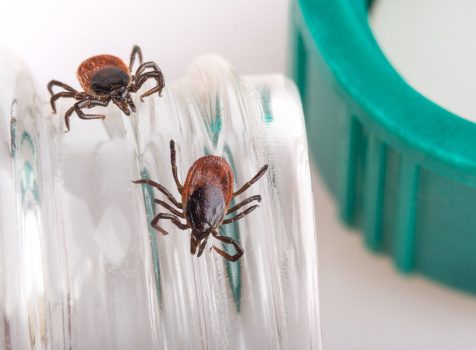In case you are struggling with a health problem, something in your treatment may be missing. Neural therapy introduced by Dr. Huneke in the early 1950s is very popular in Germany and Europe, but almost unknown in the United States. Therefore it is one of the biggest ‘secrets’ still waiting to be discovered.
Neural therapy is a simple technique that can change your life. Regardless of whether you are being treated by a medical doctor, a chiropractor, a naturopath, an acupuncturist, a massage or energy therapist – there may be a major issue that has been overlooked so far. This can be a key factor contributing to pain or fatigue, immune dysfunction or mental illness, Lyme or Candida, asthma or eczema, digestive problems or even cancer. The missing link in the therapy that we are talking about is treating blockades with neural therapy.
In Lyme disease blockades can occur in many ways.
In Lyme patients we often see a blockade of the cervical vertebra. That is not only associated with pain and motion restriction, but also with neurological symptoms including chronic irritation of the cerebellum with dizziness, balance disturbance, headache, or migraine. We call this cervico-cephalic syndrome. Very soon after the successful treatment of Lyme disease with Whole Body Hyperthermia (WBH) according to our Antibiotic Augmented Thermoeradication (AAT) protocol we learned that although our treatment eliminates the borrelia and can cure the disease even in advanced cases, this does not necessarily mean that the patient is healthy.
The cervico-cephalic syndrome in Lyme disease
The damages caused by the long lasting chronic inflammation still need to be treated. One problem subsequent to the cure of Lyme disease is the consequent treatment of the cervico-cephalic syndrome. For this purpose, the best approach beside chirotherapy and physiotherapy is neural therapy.
Cervico-cephalic syndrome is the single most important cause of malaise in Lyme patients that often remains unrecognized and untreated. However, unlike many other factors such as environmental toxicity, hormonal issues, psychological stress, nutritional factors and physical inactivity, it can easily be corrected.
The cervico-cephalic syndrome in Lyme can be caused by injury or trauma, but also by the disease itself. Inflammation of the collagen and the ligaments, and irritation of the muscle tone contribute to this syndrome, which most of the patients register as neck pain and cracking. The chronic irritation of the neck area irritates the cerebellum and affects the nervous system. The sympathetic nerves, which control stress and the fight or flight syndrome, are overactive in these areas. This influences how cells function and interact, affects how arteries deliver oxygen and other nutrients, and how veins and lymphatics drain toxins, wastes, and microbes. These so-called blockages should be the focus of our aftercare treatment in Lyme disease. Unfortunately, they are often neglected.
Why must interference fields be treated?
The blockades we are talking about here have different names: chiropractors call them subluxations, and osteopaths call them somatic dysfunction, but it is all the same. The German doctors who developed neural therapy in the 1950s called these areas of dysfunction “Störfelder”. This can be loosely translated as “interference fields” or “disturbance fields”. Scars for example, regardless of where they are located, can be such a “Störfeld”. They need to be treated, even if one feels rather healthy.
But why? “Störfelder” almost certainly limit our healing potential. This can be due to chronic or recurrent infections of the ears, tonsils, sinuses, or bladder. They can be caused by fractures, sprains and strains, whiplash injuries and concussions. The most obvious scars are those that come from major surgeries, but minor surgeries can create blockades, too. Procedures affecting the eyes, nose, teeth, tonsils, vasectomies and toenail resections can all create blockages.
Charcteristics of neural therapy
Especially in Lyme disease we combine neural therapy with other tools for testing and treatment. Neural therapy involves treating blockades, pain, or scars with targeted injections of procaine. This local anesthetic, or “freezing”, has been in use for over a century and has been called a wonder drug by many who use it. In interference fields where the nerves are producing electrical noise, it silences that noise. It also has anti-inflammatory effects and other interesting healing properties; it is completely safe and easy to use. One treatment takes only a few minutes, but it can deliver immediate results. Pain, dizziness, headache and migraine disappear. The blood flow to the brain increases; mood, memory and cognition improve.
Even though nanotechnology and stem cell research might help 21st century medicine deliver incredible new treatments to people who need them, a juggernaut of healing exists already that is just waiting to be unleashed. One example is our AAT treatment protocol for chronic Lyme disease and the aftercare with neural therapy. Treating the blockades caused by the cervico-cephalic syndrome helps us achieve full healing after the treatment of Lyme disease.
Learn more about neural therapy: Dozens of excellent books on the subject are available in German, Spanish and English.



